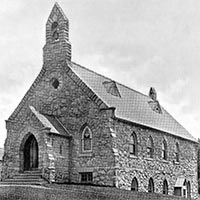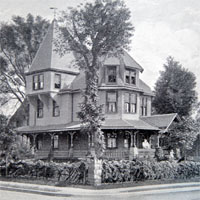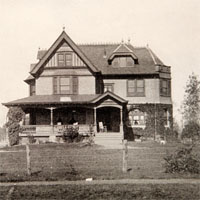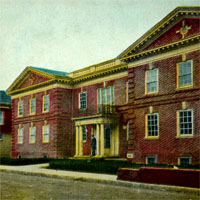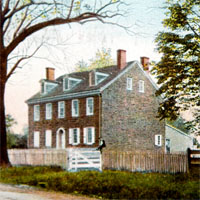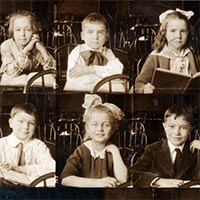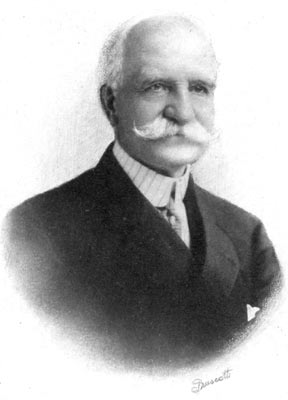A Philadelphia Industrialist in Narberth
The earliest suburban development around Elm Station (future Narberth) was summer homes for the wealthy:
Suburban Homes on the Pennsylvania Railroad
The adaptability of the country along the main line of the Pennsylvania Railroad, near this city, for suburban residences, has been appreciated during the past two years by a large number of Philadelphians. Building operations have never before been so numerous in that favored section, and the country is dotted over with hundreds of handsome and costly dwellings. Upon many of these houses, and the spacious grounds which surround them, a small fortune has been expended. Among the Philadelphians who are now erecting dwellings in that section, and which will be occupied during the coming spring and summer, are many of the most prominent business and professional men of the city.
…T. Broom Belfield, the brass founder, will occupy a new dwelling at Elm.
— Philadelphia Builders Guide, 1886

Thomas Broom Belfield (1838–1931) was the heir to a brass foundry at 435 N. Broad started by his English immigrant father Henry in 1847. He purchased property for a summer residence in 1884 from Edward R. Price (Montgomery County Deed Book 290, page 488). The Belfields never appeared in the U.S. Census in Narberth; all the years Belfield owned in Narberth, he maintained a residence at 1905 Spring Garden for his family and servants.
A Victorian bromance?
Not far from his Spring Garden home stood H. Belfield & Co., across Broad street from the massive Baldwin Locomotive Works. As a major parts supplier, Belfield developed a business and personal relationship with the younger Samuel Vauclain. Vauclain would climb to be Baldwin's President, then Chairman, but in 1885 he was an up and coming engineer and Shop Superintendent. Belfield invited Vauclain to occupy the neighboring mansion on his Narberth property, now known as "Barrie House" after a later owner, and still standing in 2023.
It is fun to speculate on a Victorian bromance in Narberth between two captains of industry, but Vauclain's 1930 autobiography Steaming Up! has left us no details of his time here. "After selling my city residence for practically what it had cost me the Vaulcain family moved, temporarily, to Narberth, about halfway between our prospective home [in Rosemont] and Philadelphia." That's all we get.
In 1901 Belfield sold his Narberth mansions; Vauclain, now on Baldwin's board, moved to "Broadlawn", his family's newly-built estate in Rosemont. The trend was underway that saw Narberth's largest homes become year-round dwellings for the wealthy, alongside the ever-increasing construction of more modest twins and singles for the middle and working classes.
S. F. Hotchkin, Rural Pennsylvania in the Vicinity of Philadelphia (1897), page 81:
T. Broom Belfield bought six acres of land for his beautiful country seat from Edward Price in 1884, which had been in his family from the time of Wm. Penn, from whom the title was made.
Mr. Price died about six years ago, aged seventy-two. He was born and died on the farm. The old Columbia Railroad passed through the farm, and crossed one corner of the property, the original granite blocks upon which the rails were laid being in the ground, and of which Mr. Belfield built four gate-posts, which he calls four monuments of the first railroad to the West in this State. The roadway had been abandoned over thirty years before he bought his lot. The architect of the house, which is of wood and stone, with modern improvements, was Mr. James H. Windrim. Mr. Ensinger (now deceased) was the builder. The dwelling is on a high elevation. There is an artesian well and a rain-water cistern, and gas and electricity light the mansion. There is a stone and frame stable. There are two acres in lawn, enclosed by an iron fence. Mr. Belfield was born in Philadelphia in A. D. 1838, and educated in the public schools. He entered into the foundry and manufacturing business when of age at 435 North Broad Street, which business was established in 1847. He still continues at the same address, his father having died in 1890.
Updated February 20, 2024.











